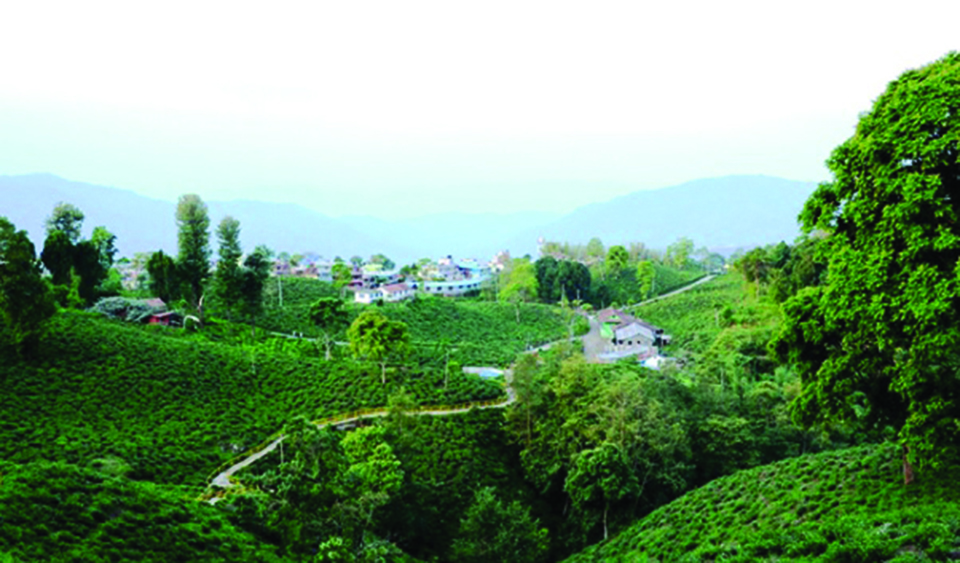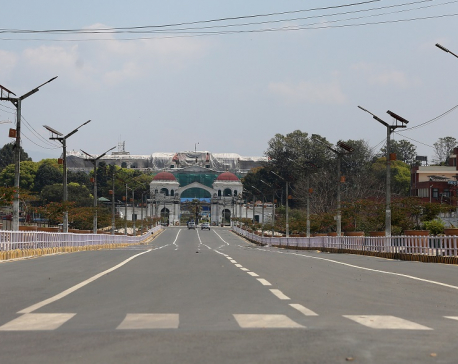
OR

More from Author
Conservationists have noticed increases in hunting of protected species and felling of trees since the spread of coronavirus began to disrupt traditional economic and social systems in rural areas.
Advantage nature. This is one thing that has happened by default amid the scourge of Covid-19 pandemic. It took us to be in global lockdown to allow the natural world we have degraded so much to heal itself to some extent. And the visuals of wild animals roaming our streets, vegetation reclaiming their spaces, skies clearing up offering spectacular views of mountains have been feast for our eyes as we shield ourselves indoors. Satellites have shown Carbon Dioxide emissions dropping deep even in major polluters like China and India.
Time to celebrate? Not just yet. It all may look so good for biodiversity, but these are all immediate gains that will be short-lived if we return to business as usual once the lockdown is eased.
Even during the pandemic now, nature conservation has been adversely impacted. Travel restrictions have meant that conservationists, wildlife photographers and researchers cannot conduct their field work. Their ground-based activities, with the help of local communities, not only advance conservation efforts but also serve as deterrents against poachers and wildlife traders. Recent reports from several African countries, for instance, have shown rhino poaching is on the rise during lockdown. Several arrests have been made in India’s Kajiranga National Park in recent weeks.
What could make matters worse is if the pandemic leads to increased unemployment. Apart from people losing jobs in the country because of the Corona-crisis, there will also be a huge number of workers returning from countries like Malaysia, Qatar, Saudi Arabia, United Arab Emirates and Kuwait if they are laid off. Over 1.5 million Nepalis are estimated to be in foreign employment now.
Even if part of this unemployed population return to their villages and resort to forest resources and wildlife for livelihood, that would add huge burden to the already under-pressure biodiversity. Add to that the increased risk of some of these unemployed people being exploited by poachers and illegal wildlife traffickers—like they have in the past. Conservationists have noticed increases in hunting of protected species and felling of trees since the spread of coronavirus began to disrupt traditional economic and social systems in rural areas.
In Nepal’s case, under present circumstances, the burden falls even more on the 8000 plus professional troops of Nepal Army trained in nature conservation. There are more than 400 voluntary groups named Community Based Anti-Poaching Units (CBAPUs) that have been supporting protected areas in Nepal, but the lockdown has kept them from doing their jobs.
Then there is this disturbing news coming in of retaliatory killing of wildlife like bats as they have been believed to be the primary source of Coronavirus although the intermediary animal from which the virus jumped into humans is yet to be identified.
Just when biodiversity faces all these threats, it potentially has another bad news: future fund crunch. In the wake of this pandemic, there are fears that foreign aid might significantly decrease as donor countries will first focus on rebooting their own economies. Nepal’s National Parks and Reserve Program for all 20 protected areas was allocated annual budget of nearly Rs 1.7 billion for the current fiscal year, according to the Department of National Parks and Wildlife Conservation.
While several major international environmental conferences, including the United Nations annual climate meet has been postponed, all eyes are now on the Convention on Biodiversity summit China is supposed to host in October this year. The crucial meet, in which countries are due to agree on a new global framework to protect plants and wildlife, is planned to be held in Kunming. The Intergovernmental Science Policy Platform on Biodiversity and Ecosystem Services (IPBES) last year said that nature is declining globally at rates unprecedented in human history. It warned that one million species are now threatened with extinction.
Back home, Nepal’s own ambitious events like Visit Nepal Year 2020 have been suspended. No visitors means no revenue for the national coffer that largely funds protected areas and no income for local communities. Protected areas saw nearly 396,000 visitors in 2018.
Shocks like the COVID-19 pandemic affect every sector of the global economy. And we need serious discussion on how do we continue with wildlife conservation even when such crisis hits us. Dispersing the impacts among multiple sectors that offer potential conservation funding can help cushion the blow to wildlife centered businesses. After this pandemic, Nepal's protected area management should learn its lesson and converge ideas to be financially sustainable. That requires detailed planning so that they are not donor-dependent. This can be done by hiking tourism fees, and efficient use of available manpower, among other ways.
Different community based organizations and non-governmental institutions can assist in capacity enhancement of public by trainings, seed money and technical supports to increase entrepreneurship, modern agriculture and diversification of income.
Ensuring alternative earning opportunities along with their traditional employment for people living nearby protected areas is also a must as this model will help them sustain during crisis like this.
Amplified voices by campaigns and petitions can exert pressure on authorities and influence policy-makers to include biodiversity protection in national agenda.
The National Planning Commission has long recognized the Economics of Ecosystems and Biodiversity (TEEBs), a global concept of nature conservation for green economy.
That is so relevant in the current Corona-virus crisis as there are growing fears that humans could face even worse pandemics in the future if they do not learn to live in harmony with nature.
"We need to learn from this crisis and acknowledge the root causes of the COVID-19 pandemic- our unsustainable relationship with nature,” Dr Jeanne d'Arc Mujawamariya, Rwanda’s minister of environment said during the Petersburg Climate Dialogue last month.
The question is: Are we and our policy makers listening?
The author is a wildlife conservation researcher
You May Like This

Most eateries in Valley switch to active home delivery services, but recouping the loss caused by COVID-19 lockdown is a long run
KATHMANDU, May 28: After shutting its business for weeks due to the lockdown, one of the most sought-after restaurants in... Read More...

Caught in India's lockdown, 23 migrants die in truck crash going home
LUCKNOW, India, May 16: A truck crammed with migrant labourers trying to reach their distant homes amid a nationwide lockdown... Read More...

The government decides to move ahead with development works despite lockdown
KATHMANDU, May 7: The government has decided to continue with the development construction works although it has extended the lockdown... Read More...







Just In
- NRB to provide collateral-free loans to foreign employment seekers
- NEB to publish Grade 12 results next week
- Body handover begins; Relatives remain dissatisfied with insurance, compensation amount
- NC defers its plan to join Koshi govt
- NRB to review microfinance loan interest rate
- 134 dead in floods and landslides since onset of monsoon this year
- Mahakali Irrigation Project sees only 22 percent physical progress in 18 years
- Singapore now holds world's most powerful passport; Nepal stays at 98th












Leave A Comment